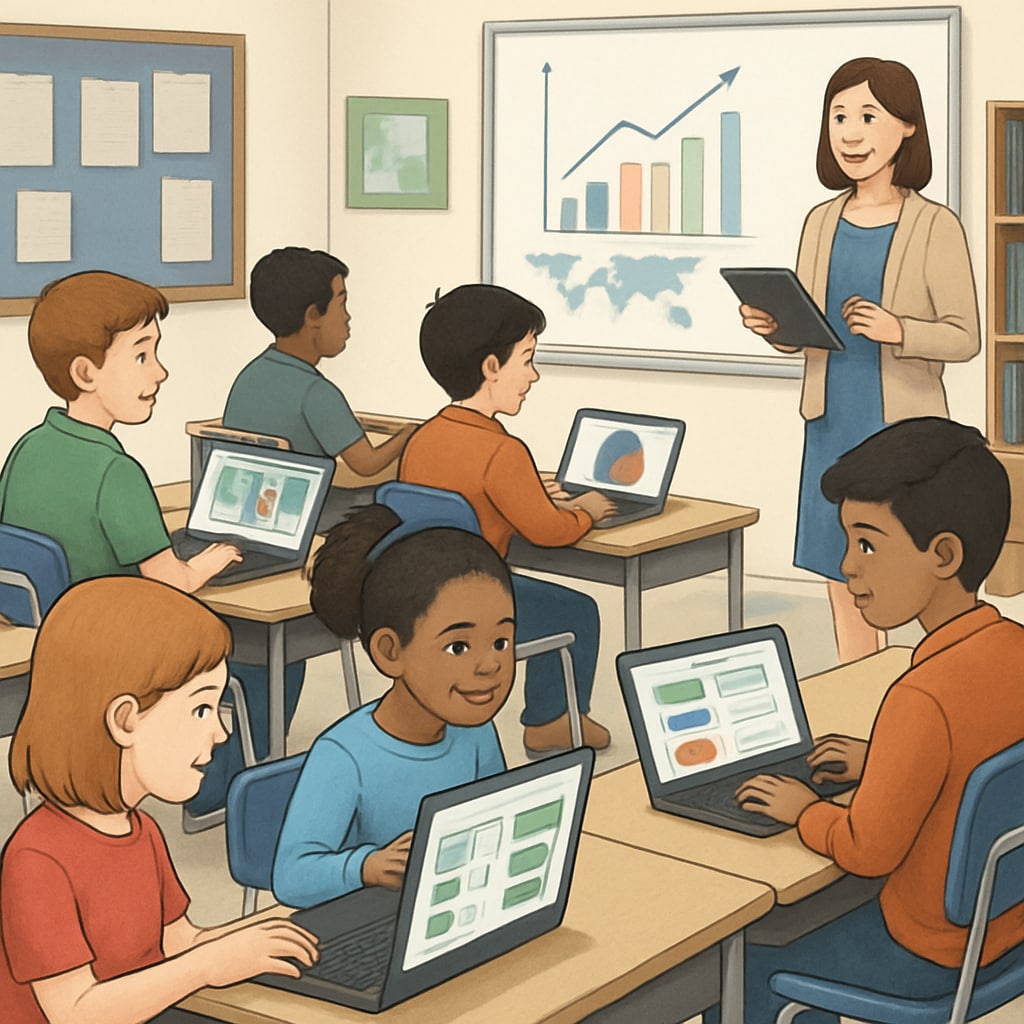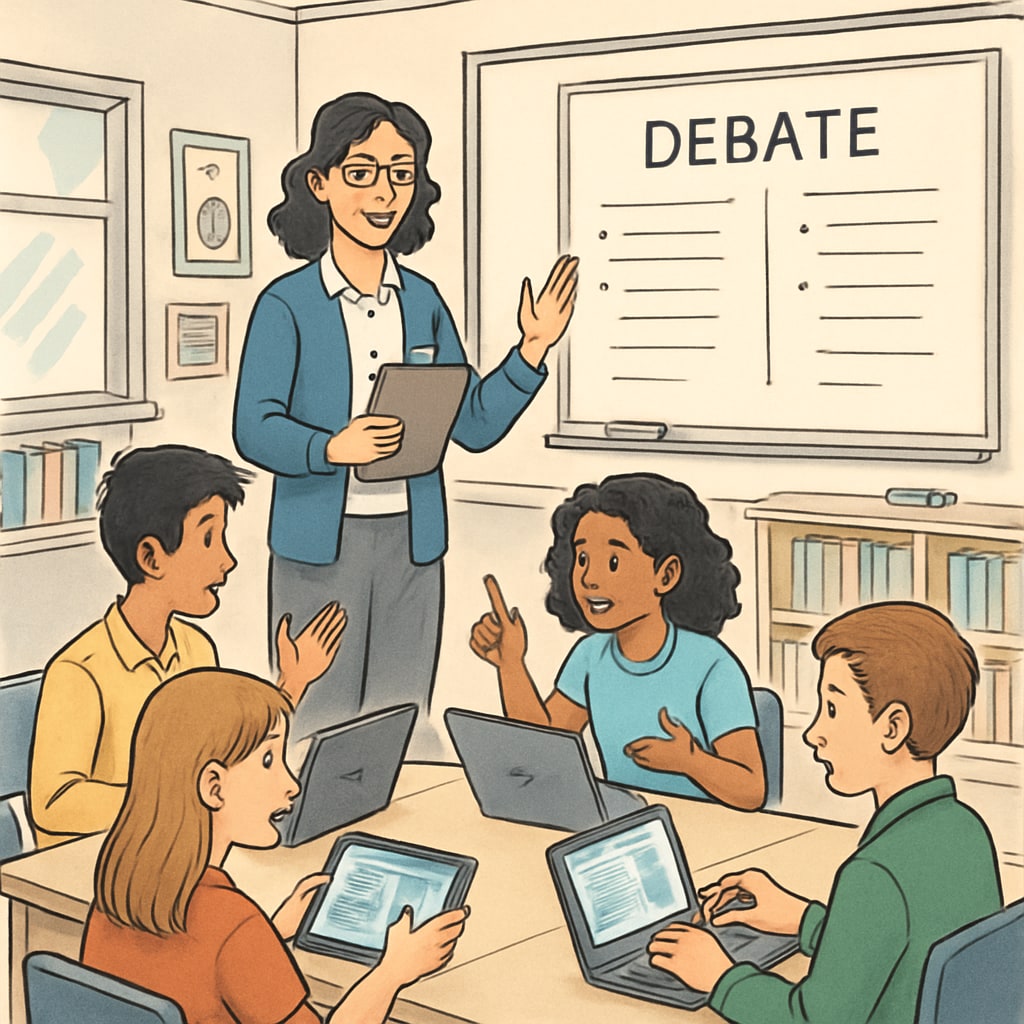The rapid integration of education technology (EdTech), such as Chromebooks, into K-12 classrooms has transformed the way students learn and teachers teach. By prioritizing efficiency—streamlining assignments, automating assessments, and providing instant access to information—these tools have undoubtedly improved operational aspects of education. However, concerns are mounting that such efficiency may come at a cost: the development of critical thinking skills, a cornerstone of lifelong learning. As educators and policymakers continue to embrace digital tools, it is vital to consider their long-term implications on cognitive growth.
The Promise of EdTech: Efficiency and Engagement
Education technology has delivered significant benefits to modern classrooms. Tools like Chromebooks offer students immediate access to a wealth of online resources, from interactive videos to online research databases. Teachers, too, benefit from automated grading systems, collaborative platforms, and digital lesson plans that save time and allow for greater focus on student interaction.
Moreover, EdTech has enhanced student engagement. Gamified learning apps, virtual simulations, and multimedia presentations cater to diverse learning styles, making abstract concepts more tangible. These innovations have democratized education, enabling remote learning and bridging accessibility gaps for underserved communities.

The Hidden Trade-Off: Critical Thinking on the Decline?
While EdTech promises a brighter, more efficient future for education, critics argue that it may inadvertently stifle critical thinking. Critical thinking—the ability to analyze, evaluate, and synthesize information—is not an automated process. It requires time, effort, and intellectual engagement, which may be overshadowed by EdTech’s focus on speed and convenience.
For example, reliance on pre-packaged answers and multiple-choice formats in digital assessments discourages deeper inquiry. Students may become passive recipients of information rather than active participants in constructing knowledge. This “Google it” mindset prioritizes finding quick answers over evaluating their credibility or understanding their broader implications.
Critical thinking involves grappling with ambiguity, forming independent judgments, and engaging in reflective problem-solving. Over-reliance on technology can limit opportunities for students to practice these skills, leaving them ill-prepared for complex real-world challenges.
Striking the Right Balance in Digital Classrooms
To address these concerns, educators must adopt a balanced approach to incorporating EdTech into their teaching strategies. Here are some actionable steps to ensure that technology enhances, rather than diminishes, critical thinking:
- Encourage Open-Ended Questions: Design assignments that require students to analyze and synthesize information rather than merely recall facts.
- Blend Digital and Analog Learning: Use EdTech for efficiency but complement it with activities like group discussions, debates, and hands-on projects.
- Teach Digital Literacy: Equip students with skills to critically evaluate online information, fostering discernment in a world filled with misinformation.
- Emphasize Reflection: Incorporate reflective journals or peer reviews to help students process and articulate their learning experiences.
By diversifying teaching methods and integrating technology thoughtfully, educators can foster critical thinking while maintaining the operational benefits of EdTech.
The Role of Policymakers and Developers
Policymakers and EdTech developers also play a crucial role in shaping the future of digital learning. Policymakers must ensure that curricula emphasize cognitive skills alongside technological proficiency. Meanwhile, developers should design tools that promote inquiry-based learning and critical analysis.
For example, adaptive learning platforms could integrate prompts that challenge students to justify their answers or explore alternative perspectives. Gamified tools could include scenarios that require strategic decision-making, encouraging deeper thought processes. By aligning technology with educational goals, stakeholders can create a symbiotic relationship between efficiency and critical thinking.

Conclusion: Navigating the Double-Edged Sword
The integration of EdTech, including Chromebooks, has revolutionized education, offering unparalleled efficiency and accessibility. However, as we embrace these tools, we must remain vigilant about their impact on critical thinking. A balanced approach—combining the strengths of technology with the irreplaceable value of human inquiry—can ensure that students are not only equipped with knowledge but also the skills to apply it thoughtfully in an ever-changing world.
By fostering a classroom culture that values depth over speed and questions over answers, educators can transform EdTech from a mere tool of convenience into a catalyst for cognitive growth.
Readability guidance: This article uses clear, concise language and short paragraphs to enhance readability. Lists and subheadings break down key points, while external references underline credibility. The balance between active and passive voice ensures an engaging and professional tone.


